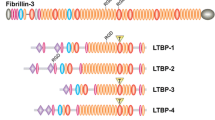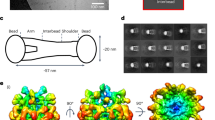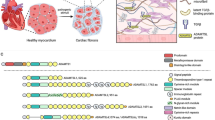Abstract.
Fibrillins are the structural components of extracellular microfibrils that impart physical properties to tissues, alone or together with elastin as elastic fibers. Genetic studies in mice have revealed that fibrillin-rich microfibrils are also involved in regulating developmental programs and homeostatic processes through the modulation of TGF-β/BMP signaling events. A new paradigm has thus emerged whereby the spatiotemporal organization of microfibrils dictates both the cellular activities and physical properties of connective tissues. These observations have paved the way to novel therapeutic approaches aimed at counteracting the life-threatening complications in human conditions caused by dysfunctions of fibrillin-rich microfibrils.
Similar content being viewed by others
Author information
Authors and Affiliations
Corresponding author
Additional information
Received 2 April 2007; received after revision 23 May 2007; accepted 24 May 2007
Rights and permissions
About this article
Cite this article
Ramirez, F., Sakai, L.Y., Rifkin, D.B. et al. Extracellular microfibrils in development and disease. Cell. Mol. Life Sci. 64, 2437–2446 (2007). https://doi.org/10.1007/s00018-007-7166-z
Published:
Issue Date:
DOI: https://doi.org/10.1007/s00018-007-7166-z




